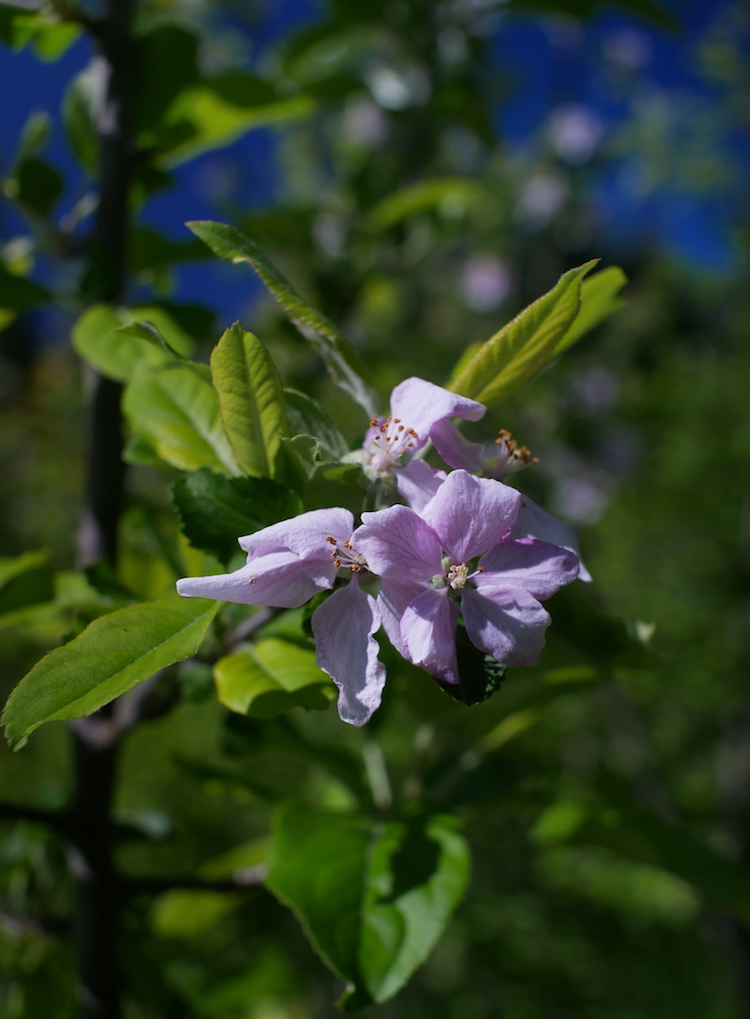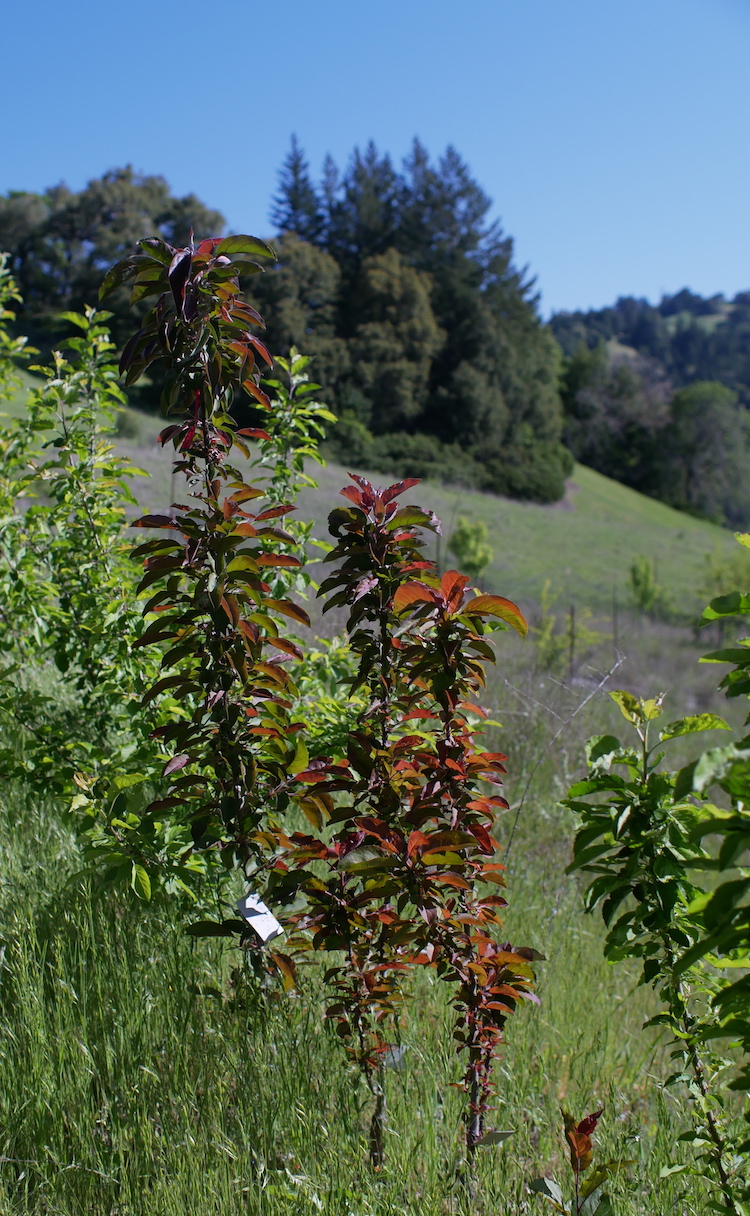Pretty much all of my productive time is taken up right now by grafting, weeds and other spring stuff. However, I do have a much better action cam now, with clear picture, amazing stabilization and acceptable sound. That device will allow me to do more run and gun, spur of the moment, off the cuff videos. In this one, I just hit some projects and talking points around the property, mostly projects in process.
For one thing, there are over 50 apple seedlings blooming this year! That is a huge jump from probably under 25 that have ever fruited previously. There are also a number of combinations that have not ever bloomed yet, like king david, maypole, cherry cox and sweet 16 all crossed to rubaiyat and some crosses made using the red fleshed columnar Maypole. I’m very much looking forward to what the season brings us in that department and hoping that bears don’t get in the garden again, which could be an epic disaster in those seedling trial rows. I about peed myself when I saw there are 4 Rubaiyat x Cherry Cox blooming.
Pinker than average blossoms on a Rubaiyat x Cherry Cox seedling seems like a good omen. Cherry flavored apple, meet fruit punch flavored apple. May your offspring be blood red to the core and delicious.
Many of my Maypole crosses are showing this columnar trait. They will produce short, compact trees that grow upward with few side branches and fruits clustered along the stems. The buds are spaced very close together. This can be a valuable trait for restricted spaces. Given how many seedlings are expressing this habit with only a single columnar parent, it should be easy to breed for. Three of these seedlings are blooming this year, and they are the only trees blooming in this youngest block of seedlings, so apparently they are precocious as well, which is nice in a plant that usually takes so long to come into bearing. Oh, AND they take up less space than the other seedlings, so could potentially be planted even closer in trial rows, both in row spacing and between row spacing. I have one other columnar-ish tree, but it’s more like a dwarf. But there are others out there and I think there is a lot of potential here for both backyard and cider production with these compact, pretty, easy to maintain trees. I would not be surprised to get a decent cider apple out of this first generation of Maypole crosses using Wickson and Chestnut Crab pollen.
This Grenadine x GoldRush seedling showed some promise last year, but only produced one apple. This year there are hundreds of fruitlets, and it will require heavy thinning. It wasn’t really that good last year, but often trees will have to become established before producing exemplary fruit, so I’m keeping an eye on it.
I don’t think I’ve ever talked about my flower bulb understory for fruit trees experiment as much as I do in this video. Introducing that project is one of those videos that has been on the back burner, but never seems to get done. I started it a long while back with a couple of blog posts. This system shows promise, but long term comparative trials are critical to an assessment of it’s actual field worthiness and real world performance. Proof of concept is established and the project is ready for phase two. I may be able to set up those trials in the next couple of years using a block of trees that could be used for at least a whopping FIVE different trials at once: trialing seedlings, tree paint, tree training, interstem suckering prevention and bulb understories! Now that is some stacking! Hey, why not add some biochar trials to that! Maybe it really is finally time to look for some help. Those trials could yield a great amount of useful information.
One of my early bulb understory experiments now well established and pretty much out competing all weeds. It is already dying back and will be pretty flat and not really using any water by mid May. It will also leave a nice mat of dying mulch on the ground for the rest of the dry season. I would guess that there are enough bulbs in here now to plant at least 8 more of these, and the project is ready for phase two, long term trials. There are probably also other plants out there which could serve this purpose, but very few and they may be hard to suss out.
My tree collard, Peasant King, is sill performing admirably. It is bigger, purpler, fatter stalked, and straighter than all others in that seed grown population. Not only that, but out of all the first batch of seedlings, it is one of only two which have never flowered, the other being a sad looking runt of a thing. Infrequent flowering is one of my selection criteria for this plant. My last batch of cuttings did very poorly, but I have a new batch rooting (I hope) and more cuttings growing. I may try air layering them this year. That means wrapping some rooting medium and plastic around the stem while the cutting is still on the plant, then cutting it off after roots have formed. Ideally, I would propagate many cuttings and sell them in the coming years. If not, I hope to at least get them to people who will.
Peasant King Leaves.
I gave what remained of my original Montenegran tree collard seeds acquired from Sophia Bates to Chris Homanics, plant collector, enthusiast, breeder, hunter, preserver and cataloger. He will grow them out and use them in his tree kale breeding project, which you may be able to be part of by growing out seeds: https://www.experimentalfarmnetwork.org/project/14
Or: https://mariannasheirloomseeds.com/seed-catalog/special-crosses/chris-homanics-seeds/homesteaders-perennial-kaleidoscopic-kale-grex-new-2016-detail.html
And here is a Podcast interview with Chris on his work: https://www.cultivariable.com/podcast-8-chris-homanics/
And Website for Chris’ apple farm, Queener Farms, in the Willamette Valley Oregon: https://www.queenerfarm.com/
And now I’m off to graft the many very interesting apple varieties that Chris Homanics brought me this winter. Now that I’m ready to cull out many of the varieties I’ve collected that have failed to perform adequately, I may do one more collecting push this coming winter and re-graft many of those losers over to trial a last batch of promising apples.








